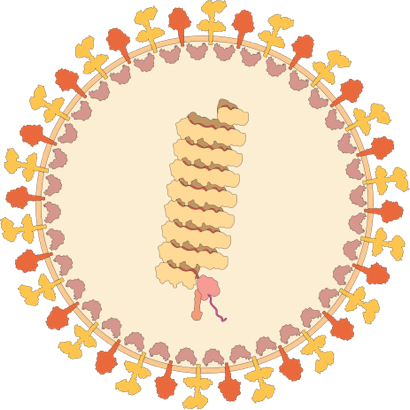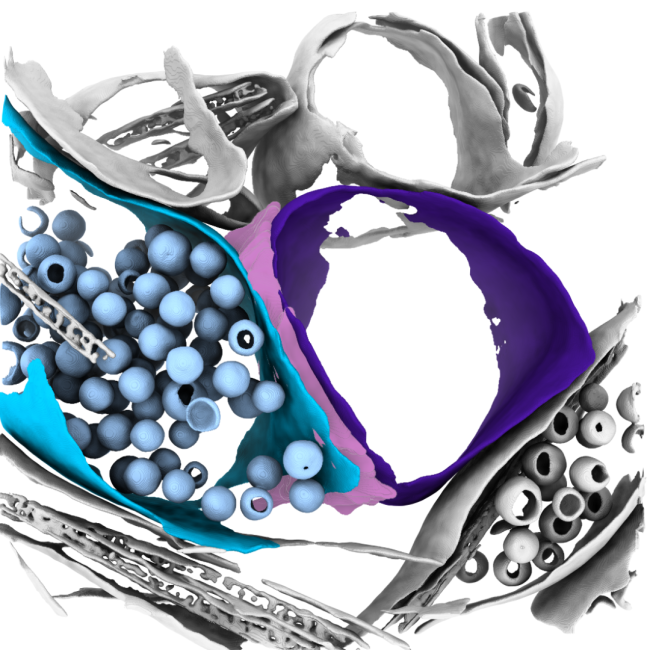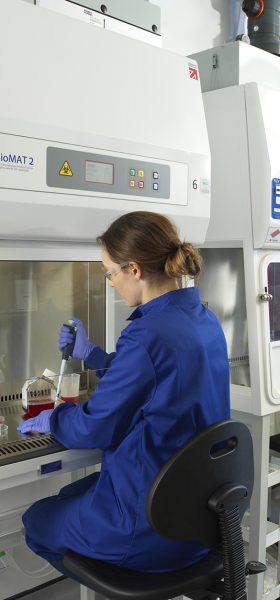The aim
To better understand how cells interact with each other and the extracellular matrix, and how these connections contribute to normal cell function and disease progression.
“Cell-cell contacts are essential for healthy tissues and organs, but know relatively little about the underlaying mechanisms forming them. Our work will investigate how cells form interfaces with other cells and the extracellular matrix. We hope our findings will improve understanding of how the break down of cell connections contributes to illnesses such as Crohn’s disease.”
The ambition
This work provides new biological insights into the nature of cell-cell and cell-extracellular matrix interactions, to help us understand their role in health and disease.
We will find new ways to create an environment in which to grow cells in the laboratory that mimics the physical and chemical cues they would get in a tissue in the body. These techniques are adopted by other researchers, improving the quality of biological research and drug development.
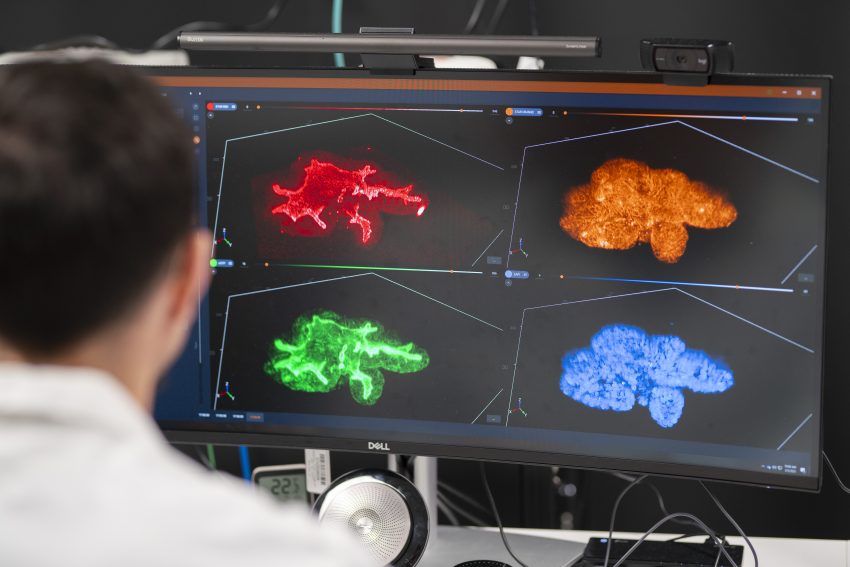
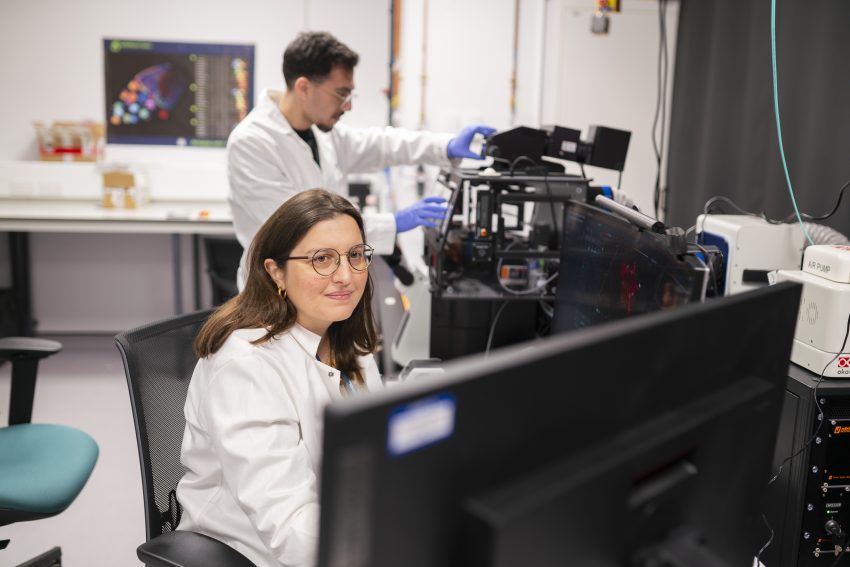
What are we doing?
Using innovative imaging, precision chemistry and AI to study the biomolecules that are important in cell interactions in three dimensions. We will also investigate the interactions between cells and the extracellular matrix, which is a network of molecules that provides structural support to tissues and organs and plays vital roles in tissue formation, cell differentiation and regulation. This work will involve overcoming significant technical challenges to create a biochemical and spatial environment which simulates the 3-dimensional tissues inside our body.
Why?
We know relatively little about the physical and chemical components needed for cells to make connections with each other and the extracellular matrix to assemble into tissues. These connections are essential for cell and tissue health, but we don’t understand their dynamic assembly, structure and how they contribute to cell function and health.
Currently, cells are usually studied in the laboratory in 2-dimensional culture which isn’t representative of the complex 3-dimensional environment seen in the body. We will develop techniques to more closely mimic the experiences of cells in the body to improve our understanding of cell connections.
“By recreating conditions that are more like those found in the body, we can better understand the fundamental biology of cell-cell and cell-extracellular matrix connections. These connections are critical in both health and disease.
“This is technically difficult, but at the Franklin we have the chemical development expertise to manipulate the molecules involved in cell interactions and to create native-like growing conditions. We will see what impact these chemical modifications have using light and electron microscopy and AI to study the interactions over time and in detail.”

Research examples
An early project will be to study the biology of the loss of integrity of cell-cell interactions in models of gut inflammation, which could help us to better understand Crohn’s disease.
In the longer term, we hope to create a map of the biomolecules, such as glycans, lipids and proteins, involved in cell interactions. This includes research to better understand the roles of the cell signalling pathways and structural forces.
Why the Rosalind Franklin Institute?
This research is pioneering and needs a highly collaborative multidisciplinary approach that includes clinicians, researchers experienced with different leading-edge imaging techniques, and computer scientists working closely together. This is research that would not generally be possible in a university department, as it needs the specialised expertise and equipment based at the Franklin and the neighbouring Diamond Light Source.




